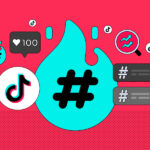In 1981 a popular song by the Buggles proclaimed that Video killed the Radio Star.
The premise was that the new technology of video would supplant radio. The report of radio’s
death was, however, premature. It continued to thrive worldwide and in Indonesia.
Video probably failed to kill off radio, probably because – as explained by communication
theorist Marshall McLuhan – the medium was the message.
Video’s carried a message of passivity as images flashed onto the audience; radio promised
intimacy, as if you are in a room with the announcer, and that probably contributed to its
survival. Radio also feeds the imagination of listeners as each imagines the scenes in their own
mind.
But now, almost 40 years after video was supposed to have killed off radio, there is a new
contender whose medium has almost the same message of intimacy as radio – the podcast.
Will this technology finish the job that video was unable to complete?
The figures look encouraging. Musicoomph, citing a research by Edison and Nielson, said in
2021 there were a million podcasts worldwide, with some 30 million episodes. Podcasts can
now not only be enjoyed through iTunes but also Anchor, Spotify, SoundCloud, and others.
A report released by We Are Social and Hootsuite titled “Digital 2022: April Global Statshot
Report” showed Indonesia to be the country with the second largest number of podcast
listeners. About 35.2 percent of internet users between 16 and 64 years of age are keen
podcasts listeners.
The presence of podcasts also simultaneously triggered a migration of broadcast content and
many radio presenters in Indonesia have turned themselves into podcasters. Reza Chandika,
Anka Tama, Radhini, and Nastasha Abigail are among them, through the Rapot podcast.
Former Prambors FM radio announcer Deddy Mahendra Desta initiated the DESTAnya Siapa
comedy podcast while Ananda Omesh, Surya Dini, Imam Darto, and Angga came up with
another comedy podcast, PODKESMAS (Podcast Kesehatan Masyarakat/ Public Health
Podcast).
Podcasts and radio basically offers the same audio content, be that news or entertainment.
They both also need presenters and are based on the same concept, theater of mind, that
depends on the imagination of listeners.
The difference is that radio needs a radio station and a broadcast permit while podcasts can be
made anywhere with just a recorder, without the need of any permit.
Content wise, both radio and podcasts can offer intimate content that can make listeners feel
closer to the presenter and feel the relevance of the topic discussed. But while radio has a
structured program schedule, podcasts are more free and variative in content.
Radio’s Resistance to Disruption
In spite of the advantages enjoyed by podcasts, radio, however, is holding its own.
A survey by the research and development unit of Kompas that questioned 522 people in 2021
showed that the sensations from listening to music from the radio was irreplaceable.
Music peppered with chats and comments by the presenter or his or her interactions with
listeners, make radio feel more intimate in keeping listeners company throughout the day. This
is the characteristic that should be retained as radio’s forte amid the current tough competition
in the media and the fast ongoing changes.
Understanding and being open to adapt to the situation and the development of time are also
key to the survival of radio. The internet also allows radio to share their audio content to a wider
audience and also based on demand.
Radio stations can actually have their own website, Youtube channel, social media and even
their own podcast to add to their streaming services. Through the digital media, radio can
provide up to date information in a quicker and more efficient way.
Radio can also make use of the interactivity of social media to boost their interactions with
listeners, including by offering giveaways, Q&As or even live broadcasts through the Instagram
features.
Radio Prambors, a broadcaster that has existed since the 1970s, for example, continues to
broadcast using electromagnetic frequencies but also makes use of social media and the
internet to draw public interest.
It has been able to get 506,000 followers on Instagram, 175,000 subscribers on YouTube and
2.2 million followers on Twitter. Radio Prambos even produces podcast contents streamed on
Spotify.
In a twist to new technologies replacing old ones, the 126 year old radio may yet prevail,
especially if it is able to absorb new technologies and increase its reach as well as to lower its
costs.
Long live the radio.
Written by Ratmia Dewi



